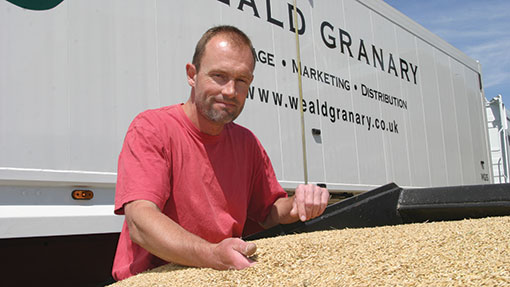Farmer Focus: Crop yields confound

What is a “normal” harvest these days? We cut one field of wheat earlier this year than we harvested it last year, when it was in oilseed rape. Moreover, the oilseed rape, which had been behind all year, yielded far better than this year’s crop, which had always looked very well.
Yes, oilseed rape can do this to you, but on some of my more challenging land, this year’s crop established well, grew well, had an unprecedented lack of pigeon damage and even podded up exceptionally well, only to yield poorly.
Were there too many seeds to fill? It’s a common theme locally and I look forward to hearing some more theories from fellow farmers.
We then moved into the winter barley, which produced a record high for the land it was on. That was followed by pleasing oat and wheat yields and we were also on course for an unheard-of mid-August finish. And cereals were coming in at 12% moisture (with apologies to those in the West who may be assuming this is a misprint).
Then, of course, the rain came and I’ve spent the past ten days or so being occasionally pleased to find some sub-19% moisture grain to combine.
Judging by milling wheat samples coming through the lab at my local co-operative store, proteins will average the lowest they have done for a long time in our region, although in another bizarre twist, some Crusoe has been hitting 14%. This includes some of ours, grown after oats and yielding well – what’s that all about?
The early harvest followed by rain has allowed some very timely direct drilling of cover crops in front of spring crops.
Having experimented with these for a dozen years, getting them in early is paramount. We shall move on to oilseed rape imminently and with the neonicotinoid ban, we have various approaches planned.
Some will be the TuYV-resistant variety Amalie, some an imported hybrid treated with Mesurol (methiocarb) and some a conventional variety planted with a vetch companion crop.
What’s the bet all my agronomic efforts will be completely overshadowed by the effects of the weather?
Andy Barr farms 630ha on a mixed family farm in Kent, including 430ha mainly of winter wheat, oilseed rape and spring barley. The rest is in an OELS scheme and grazing for 500 Romney ewes and 40 Sussex cattle.
Read more from all our Farmer Focus writers here

